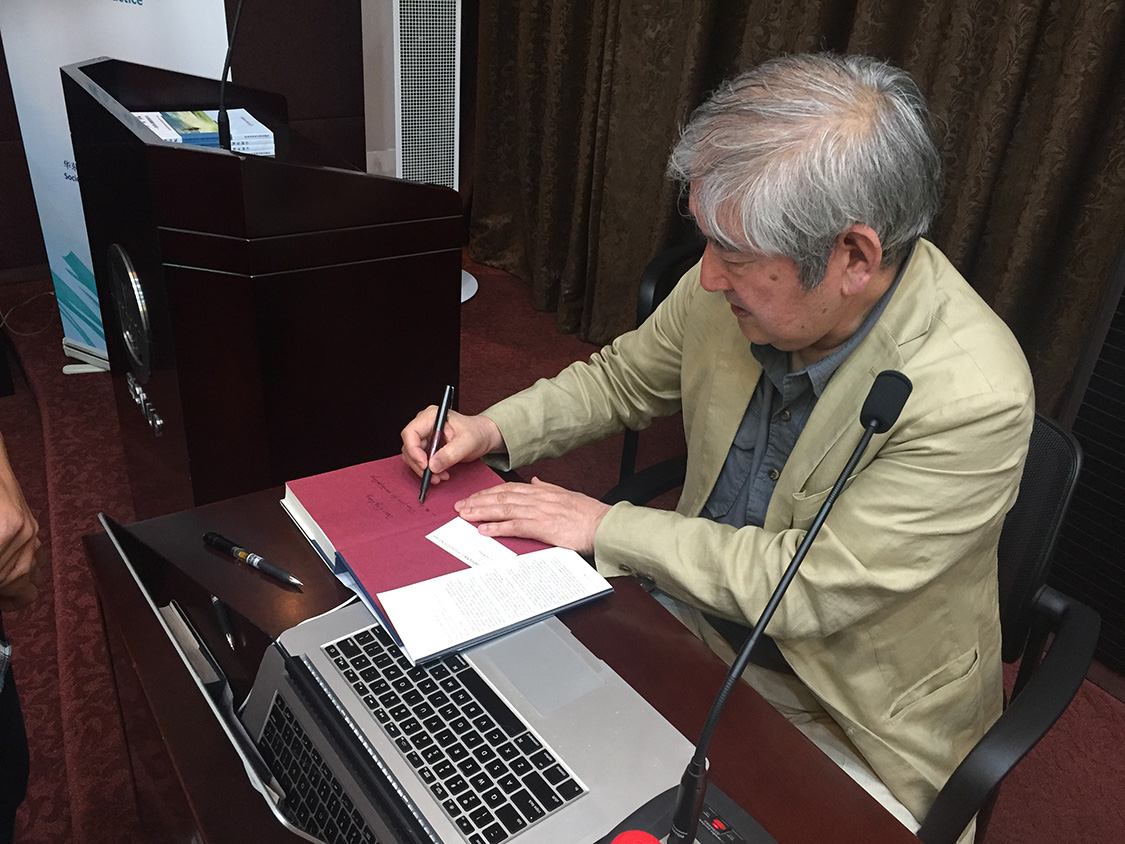Summer School in Theory holds first session in Shanghai
By Daniel Aloi

Faculty from more than 40 East Asian universities attended the inaugural one-week session of the East China Normal University (ECNU)/Cornell Summer School in Theory (ECSST) in Shanghai.
ECSST provides an opportunity for select humanities and arts faculty to interact and explore contemporary international debates in media, literary and visual studies; art and philosophy.
The summer session, “Visual Culture, Media Theory and Arts Practice,” was hosted on ECNU’s downtown Shanghai campus from July 18 to 22. Cornell faculty presented seminars and lectures and led tours of Shanghai cultural sites and exhibitions including “Tell Me a Story,” an exhibition at the RockBund Art Museum on locality and narrative in the arts across Asia.
“One of the things we appreciated was the breadth and depth of preparation brought to the school by its participants,” said Timothy Murray, the Taylor Family Director of the Society for the Humanities and Cornell professor of comparative literature and English. Murray co-directs ECSST with Amy Villarejo, Cornell professor of performing and media arts. Both led seminars at the first session, as did Renate Ferro, visiting associate professor of art; and Naoki Sakai, the Goldwin Smith Professor of Asian Studies.
Murray led a seminar on theorizing art and technology, examining the balance between aesthetics and the social contribution of technological art, with examples from the work of such artists as Korean video pioneer Naim June Paik and Chinese artist Xu Bing, an A.D. White Professor-at-Large.

In “Embodied Cities: Urbanism, Gender and Sexuality,” Villarejo explored embodied experiences of space and the built environment (such as urban art and activism in the 1980s and ’90s) through critical theory, art and media practices including still photography, digital art, cinema, video and installation art.
Ferro looked at the processes of documentation among artists who are inventing new narratives in their work with archives, experimental video and installations. Sakai examined the conceptual differences between “the West and the rest” resulting from European traditions of knowledge production, and the state of contemporary theory as it relates to notions of Asian humanity.
“Our inaugural seminar drew really outstanding scholars, artists and curators – the combination of expertise and interest galvanized great discussions,” Villarejo said. “The seminar continues Cornell’s legacy in the humanities but also inaugurates an exchange in China that is distinctive and exciting.”
About 2,000 faculty and arts practitioners from across Asia applied to be among the first 50 participants in ECSST.
“This speaks to the international prestige of Cornell and its participating faculty,” Murray said.
The demand was partially the result of outreach by the Society for the Humanities – the administrative home of ECSST – in partnership with the Consortium of Humanities and Institutes and the Asian New Humanities Network.
“We encouraged participation by not only faculty and advanced graduate students from leading international institutions, but also a number of very visible and influential curators and editors of media and art magazines,” Murray said.
The inaugural session was the culmination of seven years of collaboration between faculty involved in the ECNU-Cornell Center for Comparative Humanities, which cosponsored ECSST with the School of Communication at ECNU and granted participants course-completion certificates. Previous exchanges have included joint conferences held in Shanghai and Ithaca, and a faculty seminar that established parameters for ECSST in 2013.
“We plan to assess the results of the inaugural session, and we’re clearly anticipating carrying this project forward,” Murray said.
Media Contact
Get Cornell news delivered right to your inbox.
Subscribe